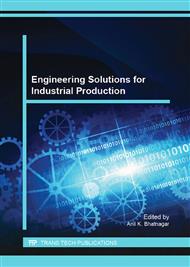p.3
p.9
p.14
p.19
p.23
p.28
p.34
p.39
The Single-Abrasive Coupled Flutter Model in Power Ultrasonic Honing
Abstract:
Flutter, a dynamic and severe self-excited vibration, easily produced in power ultrasonic honing, is one of the important factors, which affects the processing quality of the workpiece, the efficiency of the machine tool. Based on the study of power ultrasonic honing mechanism, choosing single abrasive and workpiece as research objects, respectively establishe the physical and mathematical coupled flutter model of power ultrasonic honing nonlinear system, with two degrees of freedom, determine the differential expression of the model, and simulate the boundry of flutter condition. It is proved flutter is produced in ultrasonic vibration honing, then the way is proposed to restrain. The study provide a theoretical basis for deeply seeking the strategy to repress and eliminate the flutter.
Info:
Periodical:
Pages:
19-22
Citation:
Online since:
July 2015
Authors:
Price:
Сopyright:
© 2015 Trans Tech Publications Ltd. All Rights Reserved
Share:
Citation:


